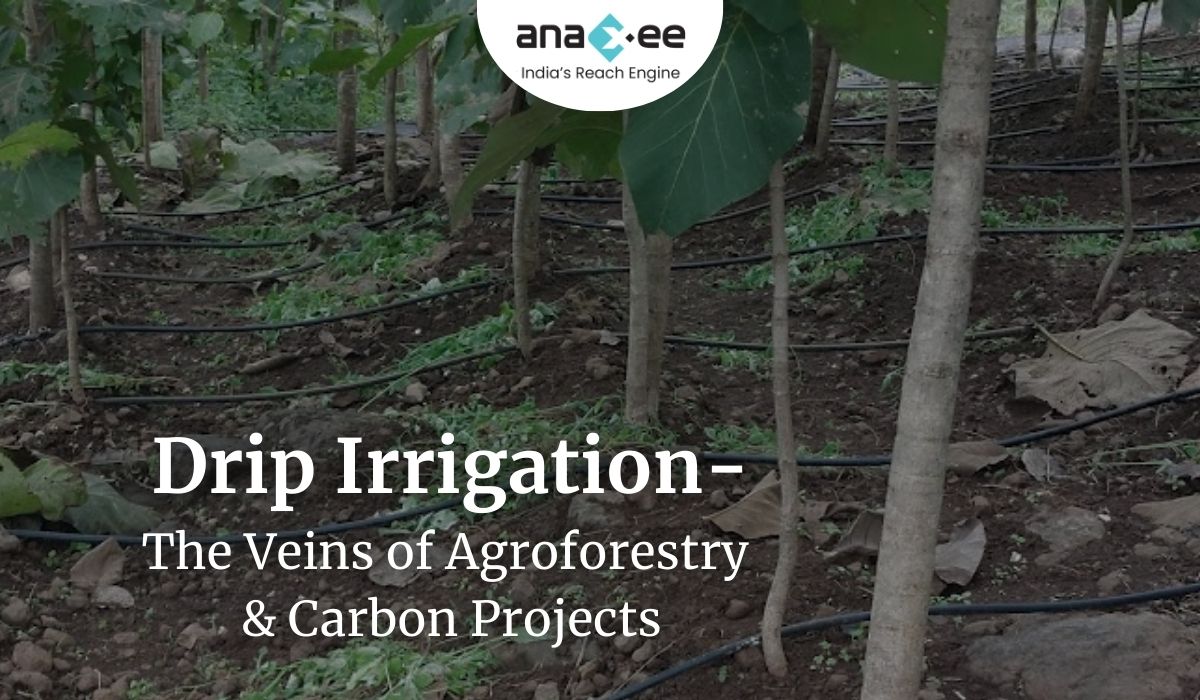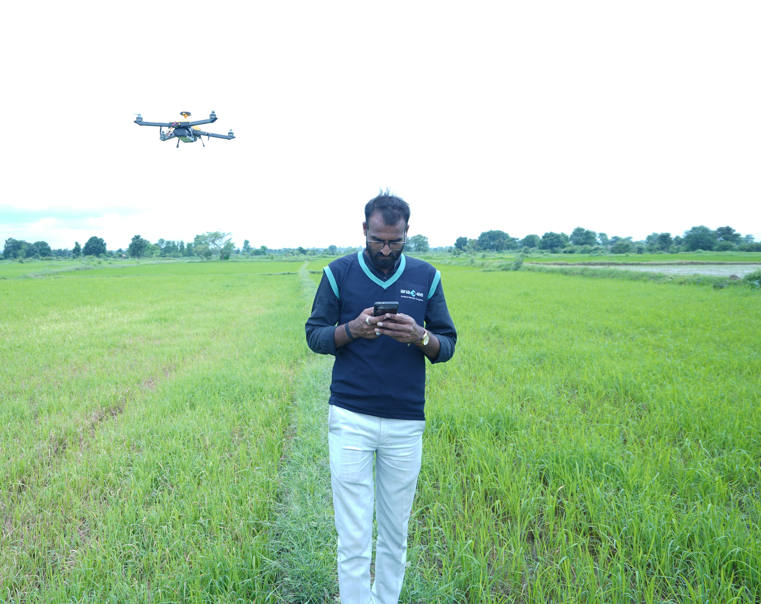BLOG

Drip Irrigation in Agroforestry Carbon Projects | Anaxee Digital Runners
Drip Irrigation – The Veins of Agroforestry and Carbon Projects
At Anaxee, we work in the field of carbon and climate projects. Our job is not only to plant trees, but also to make sure that those trees survive for the long term and grow into real forests. Over the years, one of the biggest lessons we have learned is this:
🌱 Tree plantation without water management is like building a house without a foundation.
When we talk about water management in agroforestry, nothing is more important than drip irrigation. For us, drip irrigation is not just a technology, it is the veins of any agroforestry project.
In this blog, we want to share why drip irrigation is so important, how it works, its benefits, challenges, alternatives, and what our own experience at Anaxee has been while implementing it in climate projects.
Planting is Easy, Survival is Hard
When people see a plantation project, they mostly count how many saplings were planted. 10,000? 1 lakh? 1 million? The number sounds big. But the real question is: How many survived after 2 years? After 5 years?
In India, unfortunately, many plantation drives fail because survival is not taken seriously. People plant trees during the rainy season, take photos, and then forget about them. Without care, water, and monitoring, most of those trees die.
At Anaxee, we focus on survival rate more than planting numbers. And one of the strongest tools for high survival is drip irrigation.
What is Drip Irrigation?
Drip irrigation is a method where water is supplied directly to the root zone of the plant, drop by drop. Instead of flooding the land, small pipes and tubes are laid out, with outlets (called drippers) near each plant.
This system makes sure that every single plant receives water in the right amount, slowly and consistently. No wastage, no flooding, no overuse.
That is why we call it the veins of a plantation project. Just like veins carry blood to every organ in our body, drip carries water to every plant in the field.
Why Drip Irrigation is Non-Negotiable
In our experience, if you are serious about agroforestry or carbon projects, you must have drip irrigation. Without it, the whole investment can go to waste.
Here’s why:
- Survival Rates Go Up
With drip irrigation, survival rates of plants can reach 90–95%. Without it, survival often drops below 40–50%. Imagine planting 10,000 trees and losing half of them – that’s not only wasted money, but also wasted effort and hope. - Water Efficiency
Water is precious, especially in dry areas. Drip uses up to 60% less water compared to traditional irrigation. Every drop counts. - Consistent Growth
Trees need regular water in the early years. Drip gives uniform supply, which leads to healthier and faster growth. - Saves Labor
Manual watering with buckets or hoses is time-consuming and costly. Drip reduces labor needs drastically. - Scalable for Large Projects
Whether you are planting 1,000 trees or 1 million, drip systems can be designed to cover the entire land.
Challenges in Using Drip Irrigation
We also understand that drip irrigation is not without challenges. Here are some problems we see in the field:
-High Initial Cost: Setting up pipes, pumps, and filters requires investment.
-Maintenance Issues: Pipes can get clogged with dust or algae, so they need regular cleaning.
-Dependence on Water Source: If there is no water source nearby, tankers or ponds must be arranged.
-Farmer Awareness: Many farmers still prefer traditional methods and need training to adapt to drip.
At Anaxee, we always plan for these challenges in advance. For example, when we design a carbon project, we include the cost of drip in the budget itself, instead of treating it as an extra expense.
Alternatives to Drip Irrigation
Sometimes, drip may not be possible everywhere. In such cases, alternatives can be used:
- Mulching – Covering the soil around plants with straw, leaves, or plastic to reduce evaporation.
- Rainwater Harvesting – Creating ponds or tanks to store rainwater and use later.
- Manual Watering – Feasible for very small plantations, but not for large projects.
- Sprinklers – Can be used, but they waste more water compared to drip.
- Trenches and Contour Bunding – To capture rainwater and direct it to plant roots.
These methods can help, but nothing matches the precision and efficiency of drip irrigation, especially for large-scale plantations.
Real-Life Examples
In one of our projects in Madhya Pradesh, we planted more than 50,000 saplings on semi-arid land. The land received very little rainfall. Without drip irrigation, survival would have been less than 30%.
But with a carefully designed drip system, survival rate touched 92%. After two years, the trees had not only survived but grown to healthy heights. This showed us once again that drip is the backbone of plantation success.
How Drip Systems Work in Projects
-First, the land is surveyed and mapped.
-Then, water sources are identified – borewells, ponds, or tanks.
-Pipes are laid out across the land.
-Small emitters are placed near each plant.
-Water flows under controlled pressure, directly reaching roots.
In many of our projects, we also combine drip with geo-tagging and monitoring apps. This way, we know which trees are surviving, and where water is flowing.
Drip Irrigation and Carbon Projects
For carbon projects, survival is everything. A tree that dies cannot capture carbon. Investors and companies funding carbon offset projects expect long-term impact.
Drip irrigation ensures that:
-Trees survive beyond the initial years.
-Carbon sequestration targets are met.
-Monitoring data shows real impact.
This is why, at Anaxee, we never treat drip as optional. It is part of the project design from day one.
Farmer’s Perspective
For farmers, drip irrigation is also beneficial. It saves water, reduces workload, and increases the chance of getting fruits and timber in the future. In fact, government schemes often subsidize drip systems because they know its importance.
We often tell farmers – “If you are planting trees for your future, don’t compromise on drip today.”
Conclusion – Water is Life
Planting trees is only half the story. The other half is ensuring their survival. Drip irrigation is one of the most effective tools we have to make plantations sustainable and successful.
At Anaxee, we see drip as the silent hero of climate projects. It may not look glamorous, but without it, forests cannot survive. With it, every drop of water becomes an investment in our future.
So next time you see a plantation project, don’t just count the trees. Ask – Where is the water coming from? How are they being sustained? The answer will tell you how successful that project will be in the long run.
About Anaxee:
Anaxee drives large-scale, country-wide Climate and Carbon Credit projects across India. We specialize in Nature-Based Solutions (NbS) and community-driven initiatives, providing the technology and on-ground network needed to execute, monitor, and ensure transparency in projects like agroforestry, regenerative agriculture, improved cookstoves, solar devices, water filters and more. Our systems are designed to maintain integrity and verifiable impact in carbon methodologies.
Beyond climate, Anaxee is India’s Reach Engine- building the nation’s largest last-mile outreach network of 100,000 Digital Runners (shared, tech-enabled field force). We help corporates, agri-focused companies, and social organizations scale to rural and semi-urban India by executing projects in 26 states, 540+ districts, and 11,000+ pin codes, ensuring both scale and 100% transparency in last-mile operations.



